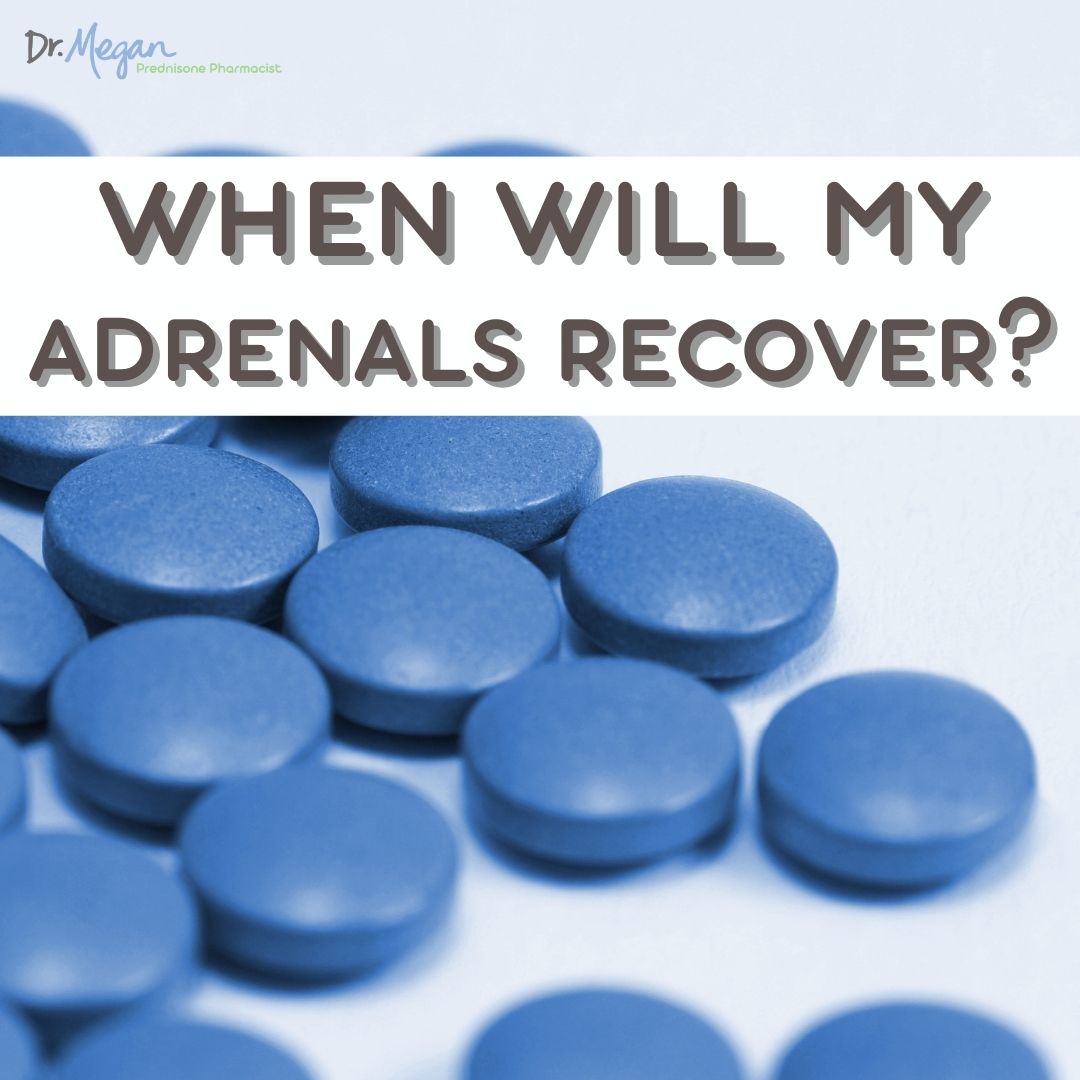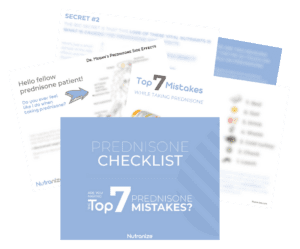Glucocorticoid-induced Adrenal Insufficiency

“Do you have a crystal ball?”
That’s what it feels like I’m asked many times by Prednisone Warriors.
What they actually ask is…
“When will my adrenals recover?”
But that’s a nuanced and tricky answer that wasn’t based on much scientific research.
Thankfully a group of scientists in Denmark started studying this topic and now we have some actual answers.
Watch now!
Timing of Recovery
Patients with adrenal insufficiency following oral treatment cessation declines over time, but remains up to 40% six months following cessation (21, 22, 23, 24, 25), 20% two years following cessation (26, 27, 28), and 5% three years following cessation ( 26).

Low Cortisol Symptoms:
Prolonged hypocortisolemia may cause non-specific symptoms such as fatigue, anorexia, nausea, hyponatremia, weight loss, myopathy, and neuropsychiatric symptoms. Insufficient cortisol responsiveness to stress may induce an acute adrenal crisis with severe gastrointestinal symptoms, cardiovascular collapse, hypoglycemia, seizures, and eventually coma. Little evidence is available to clarify whether the course (severity and outcome)
of glucocorticoid-induced adrenal insufficiency differs from this clinical picture described earlier
Withdrawal Symptoms:
Even among patients without biochemical adrenal insufficiency following cessation of glucocorticoid treatment, some exhibit withdrawal symptoms (52). The withdrawal syndrome is likely related to high glucocorticoid doses. It typically manifests with unspecific symptoms such as anorexia and weight loss, nausea and vomiting, headache and lethargy, fever, myalgia and arthralgia,
skin desquamation, and postural hypotension ( 52). These symptoms resemble adrenal insufficiency. The syndrome is considered to be a consequence of tolerance development and dependence. During the period of glucocorticoid
treatment, the body adjusts to a new equilibrium, which is disrupted after discontinuation (52).
Who’s at highest risk?
Oral and intra-articular formulations, as well as long-term and high-dose treatments, carry the highest risk of glucocorticoid-induced adrenal insufficiency defined by biochemical tests. However, no route of administration, treatment duration, or dose can be considered without risk.
Related Posts
-
Adrenal Support for Prednisone Tapering
Adrenal Support in Prednisone Recently, a Prednisone Warrior asked me about adrenal support while tapering:... -
Freedom From Prednisone – How to Recover Once Tapered Off
Happy Independence Day! I’m grateful that on this day the United States declared independence. Taking... -
How Long Does Prednisone Stay in Your System?
A question many people have is: “How long does prednisone stay in your system?” It...

